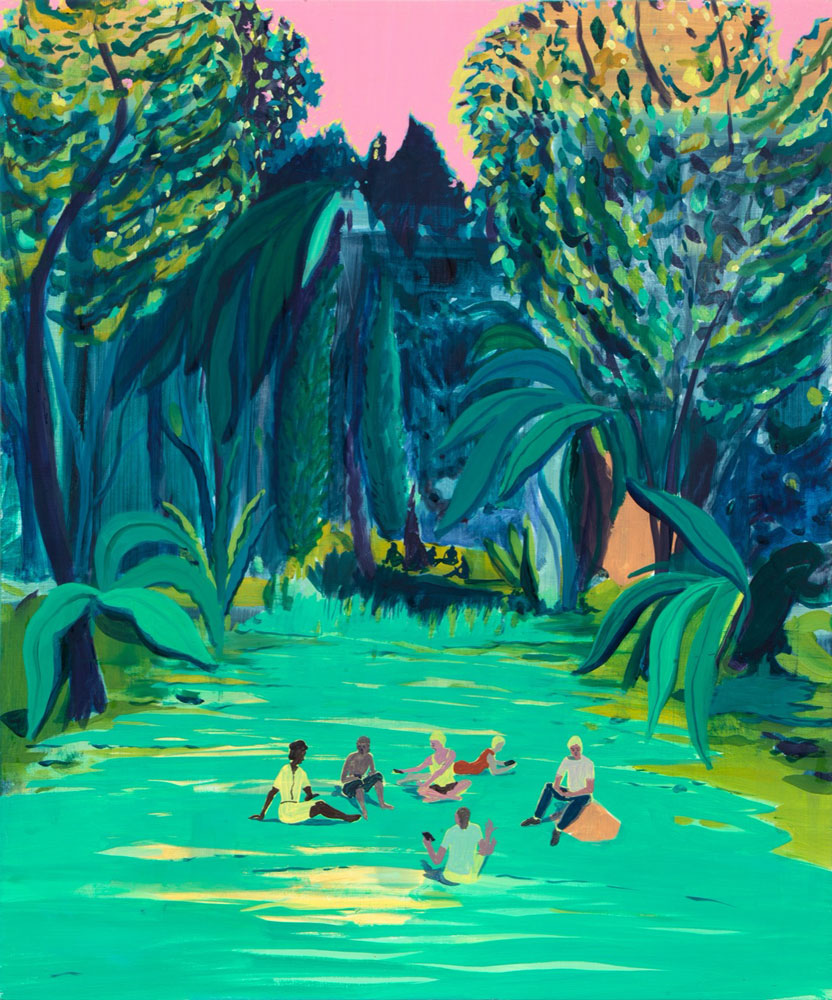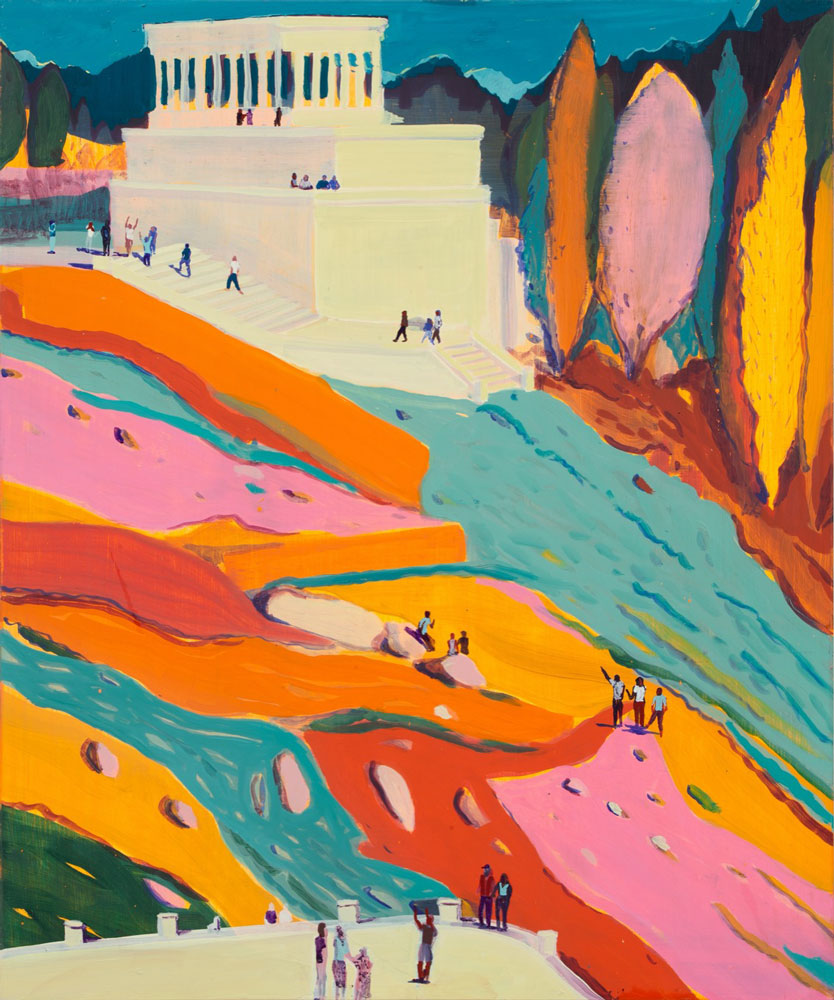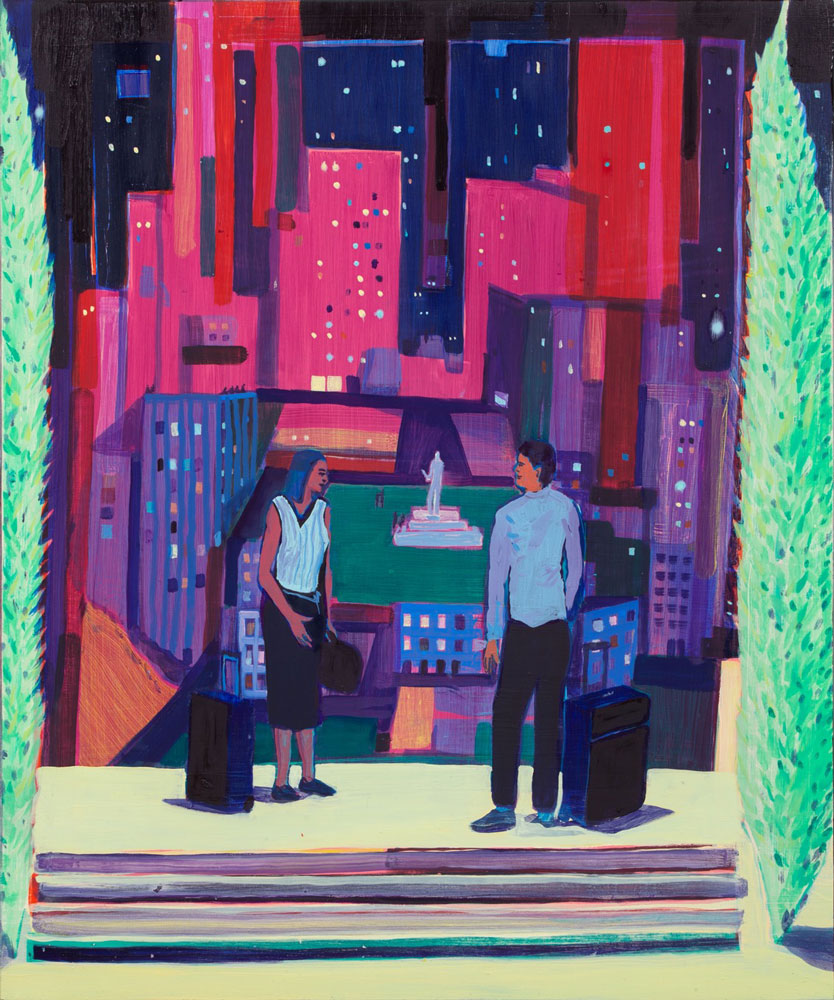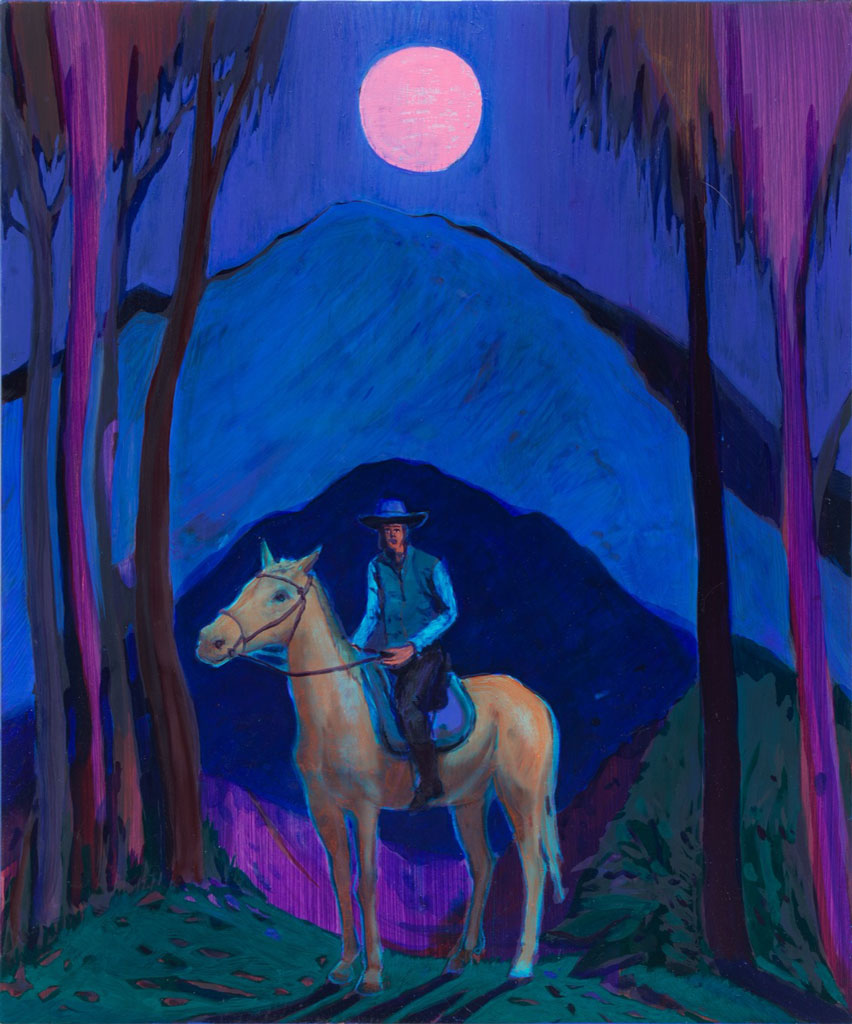ART-CITIES:Paris-Jules de Balincourt
 Evoking notions of utopia and dystopia, Jules de Balincourt’s paintings investigate public and private spaces and suggest an ever-changing landscape – both physical and psychological. In the paintings for which he first became known, de Balincourt worked from the position of an outsider (the Paris-born artist has lived in the United States since childhood), questioning structures of power and influence, laying bare injustices and hypocrisies while maintaining an amused attachment to the myths through which identity – individual and national – is constructed.
Evoking notions of utopia and dystopia, Jules de Balincourt’s paintings investigate public and private spaces and suggest an ever-changing landscape – both physical and psychological. In the paintings for which he first became known, de Balincourt worked from the position of an outsider (the Paris-born artist has lived in the United States since childhood), questioning structures of power and influence, laying bare injustices and hypocrisies while maintaining an amused attachment to the myths through which identity – individual and national – is constructed.
By Efi Michalarou
Photo: Galerie Thaddaeus Ropac Archive
Jules de Balincourt in his solo exhibition “There Are More Eyes Than Leaves on the Trees” presents his latest series of abstract landscapes, initiated over a year ago and finalised during the first half of 2020, express a desire for both physical and emotional escape. Mixing intimate and large formats, many of these paintings convey the soothing presence of nature and manifest the need for a shelter far from the world we live in. Created while Jules de Balincourt was splitting his time between Costa Rica, where he has been living partially for the past 20 years, and Brooklyn, where he has spent the last few months in lockdown, the paintings result from a personal reflection on the possibilities of isolation. The title of the exhibition derives from a vernacular Costa Rican proverb, which conveys the notion that as isolated as you may be, everyone is always aware of your doings, even in a small fishing village lost in the jungle. It also suggests the debate surrounding the human domination of nature in a world quickly undergoing ecological collapse. Working directly on board without preliminary sketches, the artist gradually brings out subconscious maps which are articulated by successive areas of color. The spatial unity found in his paintings, where the perspective or horizon seems to structure the composition, is constructed in reverse to the usual pictorial scheme. The juxtaposition of bold colous, as well as the luxuriant presence of nature, recalls the visual characteristics that defined turn-of-the-century Primitivism and the Nabis group, while offering a meditation on the meaning of contemporary life. In his unique manner, Jules de Balincourt treats the enveloping pervasiveness of nature to create a sense of intimacy reminiscent of Edouard Vuillard by making the outdoor feeling like interior intimacy scenes. The artist often cites the Impressionists and Post-Impressionists as an important influence on his work. However, the Bay Area figurative painters from the 1960s and 1970s, such as Richard Diebenkorn or Elmer Bischof, had an equally significant role during his formative years, as Jules de Balincourt grew up in California and studied in San Francisco. His work also reveals the influence of 20th-century American modernists who brought the tradition of landscape painting into the field of abstraction, such as Arthur Dove or Milton Avery. This new series of paintings demonstrates Jules de Balincourt’s newfound interest in the removal of figuration, in a quest for a more spiritual or existential approach to painting. The curved lines shaping the natural landscape in City People and Country Roads (2020) are reminiscent of the composition in Henri Matisse’s celebrated painting The Joy of Life (1905–06). But, where Matisse painted a pastoral fantasy, Jules de Balincourt depicts a more ambiguous scene in which lonely silhouettes do not interact with one another. At times directly political or confrontational, at other moments more introspective, Jules de Balincourt’s work hovers at a crossroads where the possibilities teeter between two very different realities, leaving the viewer to determine their own personal narrative.
Info: Galerie Thaddaeus Ropac, 7 rue Debelleyme, Paris, Duration: 2/7-5/9/20, Days & Hours: Tue-Sat 10:00-19:00, www.ropac.net
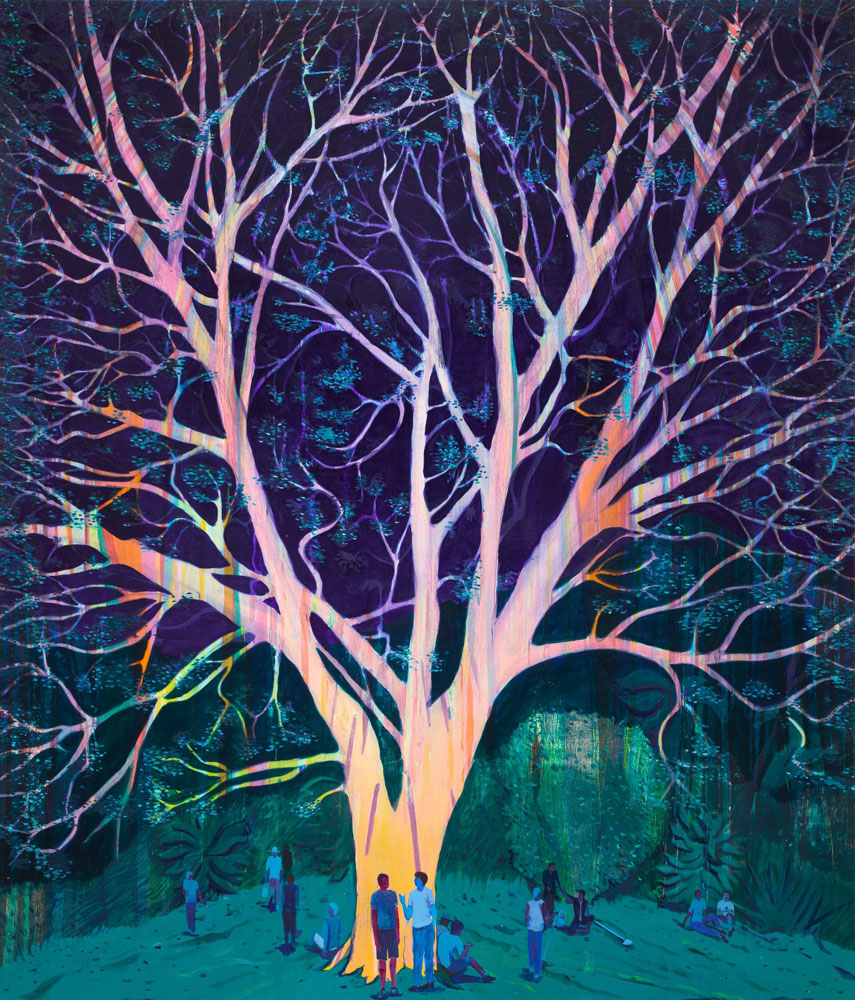
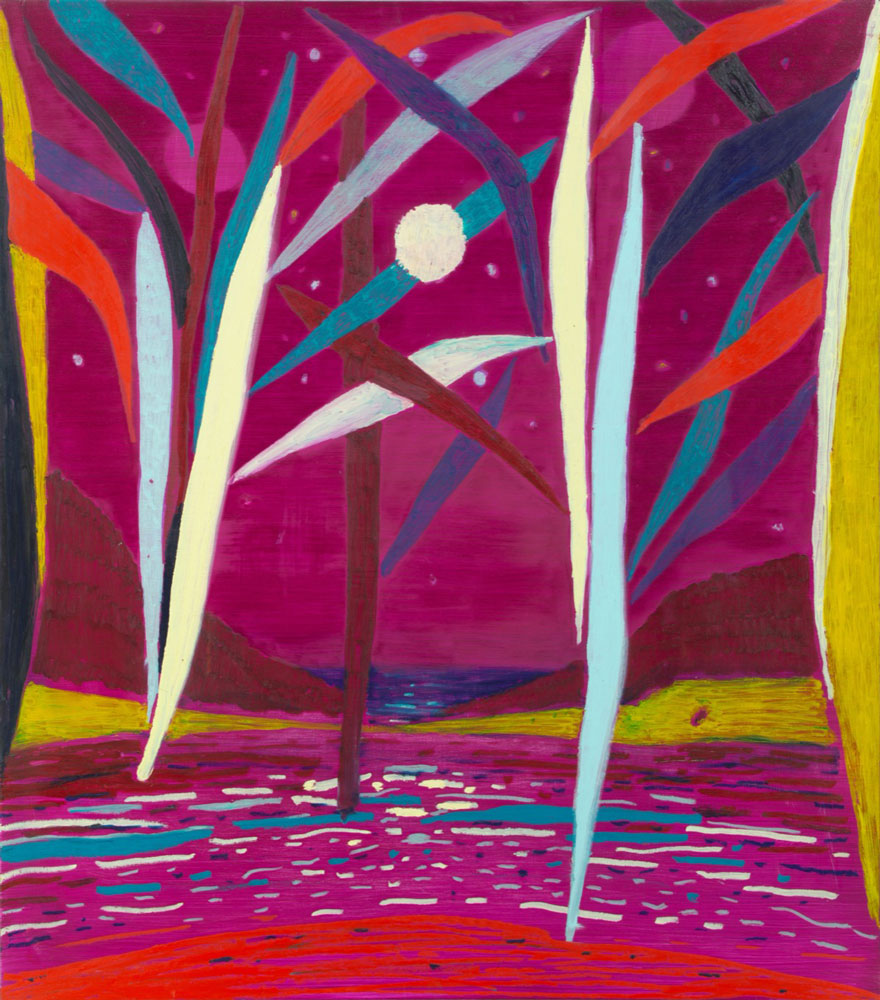
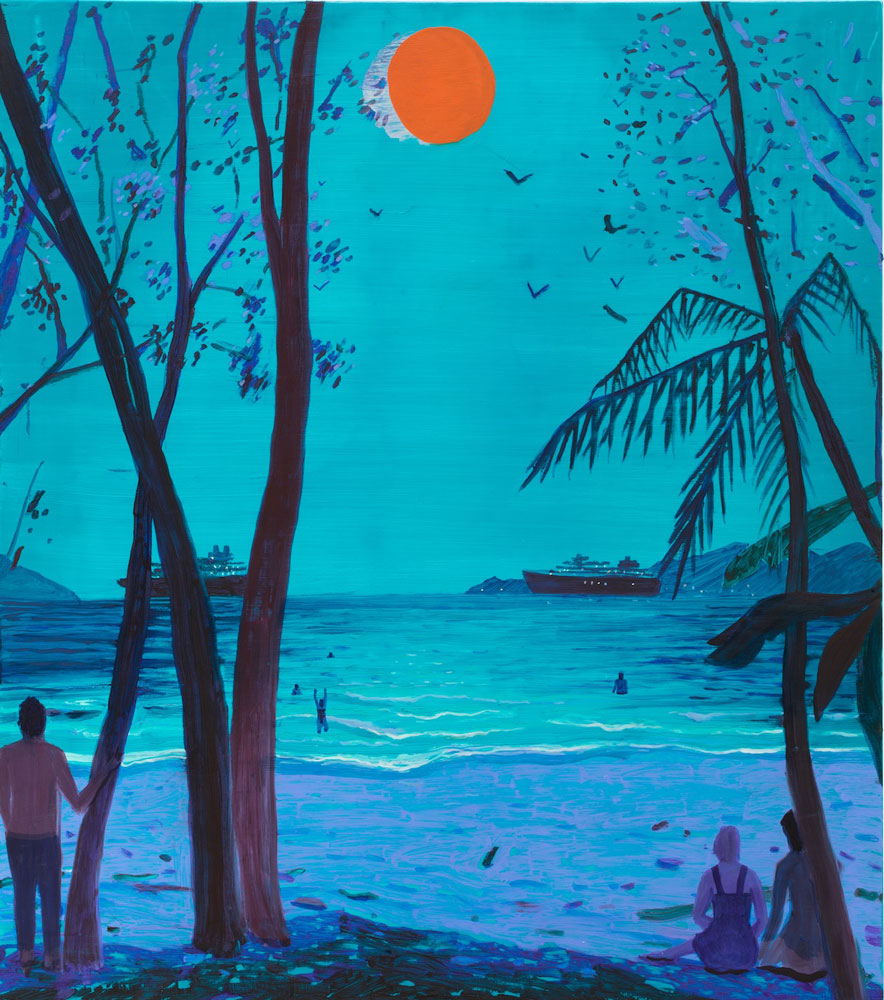
![Jules de Balincourt, “[To Be Titled]”, 2020, © Jules de Balincourt I ADAGP Paris, 2020, Courtesy Galerie Thaddaeus Ropac](http://www.dreamideamachine.com/web/wp-content/uploads/2020/07/jules-de-balincourt-galerie-thaddaeus-ropac-peinture-numero-magazine-5.jpg)
